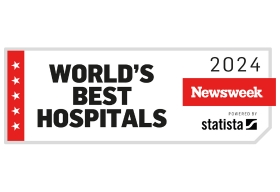Antimicrobials
Vancomycin
Continuous Infusion (CIV) Vancomycin
Guidelines for use
Continuous infusion (CIV) vancomycin is indicated for select patients only.
Please click on the titles below to read more:
1. Rationale
- Data indicates that CIV vancomycin has comparable efficacy and is potentially safer than IIV vancomycin.
- CIV vancomycin is the preferred method of administration in the following patients:
- Those who have serious deep-seated infections to ensure AUC/MIC targets are met (e.g. infective endocarditis, meningitis)
- Whose total daily intermittent IV (IIV) dosage is ≥ 4g ( CIV vancomycin will allow administration of a lower total daily dose than IIV vancomycin and may decrease the risk of nephrotoxicity)
- Requiring home antibiotic therapy (simplifies drug level monitoring and dose adjustments)
- Use of CIV vancomycin is limited by pump availability and requires a dedicated IV line (central line or PICC preferred over peripheral line)
2. Administration
Please refer to IV drug monograph on pharmacy intranet page for additional administration information.
Continuous Infusion: Infuse daily dose over 24 hours via pump
3. Empiric Dosing
Loading Dose:
- A 2 g loading dose may be considered prior to initiating a continuous infusion in patients who are critically ill AND where serious MRSA infection is suspected
For conversion of IIV to CIV:
- Consult pharmacy to assist in recommending a dose for converting patient from IIV vancomycin to CIV vancomycin (recommended to calculate individualized pharmacokinetic parameters)
Empiric Dose of CIV (in patients who have not been already initiated on IIV):
|
Creatinine Clearance* (mL/min) |
Empiric total daily dose given by continuous infusion** (random level target 15-20 mg/L) |
|
>80 |
2.0 – 2.5 g daily |
|
60-80 |
1.5 g – 2.0 g daily |
|
36 – 59 |
1.0 – 1.5 g daily |
|
20 – 35 |
500 mg – 750 mg daily |
|
≤ 19 |
Continuous infusions are not indicated (see intermittent dosing recommendations) |
|
Peritoneal Dialysis |
|
|
Hemodialysis (HD) |
|
|
CRRT |
* Estimating Creatinine Clearance: Male CrCl (mL/min) = [(140 - age) x (total body weight in kg) x 60] / [50 x SCr (µmol/L)]; Female CrCl = 0.85 x male CrCl;
*Note: Higher doses (typically, to a maximum of 3-4 g daily) may be required in patients >100 kg
4. Therapeutic Drug Monitoring (TDM)
- Vancomycin TDM should be used to enhance the safety and efficacy of therapy
Continuous Infusion Vancomycin Random Level Targets
Target levels are different for continuous infusions vs. intermittent infusions.
Random levels of 15-20 mg/L are recommended for continuous infusions
Recommended Levels
|
When to order |
How to order |
Notes |
|
|
Random Level (target 15-20 mg/L) |
At least 24 hours* following the start of the continuous infusion (upon initial dosing and after every dose change) |
Obtain random vancomycin level 24 hours after beginning CIV vancomycin |
*Note: in patients with reduced CrCl (<60 m/L), recommend drawing the random level at least 48 hours after initiation of infusion |
5. Dose Adjustments
- Adjust the initial dose by proportion to achieve the desired steady state concentration (15-20 mg/L)
- e.g. if CIV vancomycin steady state level is 10 mg/L with 2000 mg/24 h, increase the dose to 3000 mg/24 h for a vancomycin steady state level of 15 mg/L.
6. Monitoring
|
Serum Creatinine, CBC with differential, transaminases |
· At least 2-3 times per week while patient is on therapy (more frequent monitoring recommended if patient has unstable renal function or abnormal lab values) |
|
Vancomycin random levels |
· At least 24 hours* following initiation of continuous infusion · At least 24 hours* following a dose adjustment · With any change in renal function · Once weekly once target level achieved and patient’s creatinine remains stable |
*Note: in patients with reduced CrCl (<60 m/L), recommend drawing the random level at least 48 hours after initiation of infusion
Last updated: November 30, 2021





